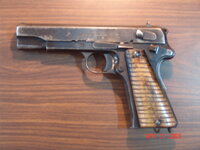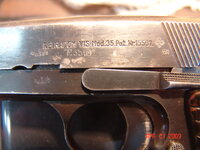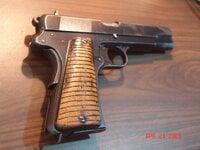Navigation
Install the app
How to install the app on iOS
Follow along with the video below to see how to install our site as a web app on your home screen.
Note: This feature may not be available in some browsers.
More options
You are using an out of date browser. It may not display this or other websites correctly.
You should upgrade or use an alternative browser.
You should upgrade or use an alternative browser.
The Guns We Own
- Thread starter ccheese
- Start date
Ad: This forum contains affiliate links to products on Amazon and eBay. More information in Terms and rules
More options
Who Replied?Token
Senior Airman
A couple weeks ago, I was working on yet another old 1911. I swapped out the sear spring with one by Cylinder & Slide and replace the sear with a brand new one from Colt. It seems to have cured the creep in the trigger and weight is now 3 pounds 11 ounces.
Last week I was shopping for yet another 1911 type. I am hoping to get a Kimber Pro Raptor II. I had to learn what al the Kimber code words meant. I don't want a "Carry" because that would be an aluminium frame gun.... Pro means it would be a Commander length gun with a full size grip frame.
Everyone has their reason, and everyone is entitled to opinions. But what do you have against AL frame guns? Just wanting to hear the reasoning. Although I typically like steel better, I have a few AL frame pistols, in various calibers, some with 10's of thousands of rounds through them, at least one with over a 100k rounds. I have a Kimber Pro Carry II that I quite like, and have quite a few rounds through.
T!
I have quite a few Aluminum frame guns in 9 mm.
The problem with an aluminum frame in a .45 ACP 1911 is that the frame is part of the feed ramp on these guns and with the wrong kind of magazine (Chip McCormick) with Devel followers, the follower may move forward and impact the feed ramp. It has no effect on a steel frame. On aluminum, it chews up the feed ramp. I know Colt 8 round magazines may also have the same "Shooting Star" follower. Some of the more aggressive hollow point ammunition will do the same thing over time and once the anodized coating is gone, the bare aluminum does not resist further damage very well. General estimates of the lifespan of the aluminum 1911 is somewhere between 15,000 and 25,000 rounds which is fairly low in my opinion. That is taking into account that other parts of the frame may crack with impact damage. These guns were intended to be carried often and shot relatively seldom.
A Frame Insert block or fully ramped barrel prevents the feed ramp from being chewed but it doesn't prevent the eventual frame cracking. Your Kimber Pro Carry may survive longer but many similar guns do not.
I have no real issues with well designed guns such as a SIG or Beretta or Taurus that use an aluminum frame because the frame is not subject to the same level of stress. Some like the SIG have a steel block which takes the real stress. The Walther P1 probably falls into the same category but I have no experience with the gun. I am not so sure about aluminum S&W automatics. The ones I have examined seem to always show wear on the surfaces that cam the barrel down for unlocking and they are very thin sections of the frame.
That's my opinion and a bit of historical data, YMMV of course.
- Ivan.
The problem with an aluminum frame in a .45 ACP 1911 is that the frame is part of the feed ramp on these guns and with the wrong kind of magazine (Chip McCormick) with Devel followers, the follower may move forward and impact the feed ramp. It has no effect on a steel frame. On aluminum, it chews up the feed ramp. I know Colt 8 round magazines may also have the same "Shooting Star" follower. Some of the more aggressive hollow point ammunition will do the same thing over time and once the anodized coating is gone, the bare aluminum does not resist further damage very well. General estimates of the lifespan of the aluminum 1911 is somewhere between 15,000 and 25,000 rounds which is fairly low in my opinion. That is taking into account that other parts of the frame may crack with impact damage. These guns were intended to be carried often and shot relatively seldom.
A Frame Insert block or fully ramped barrel prevents the feed ramp from being chewed but it doesn't prevent the eventual frame cracking. Your Kimber Pro Carry may survive longer but many similar guns do not.
I have no real issues with well designed guns such as a SIG or Beretta or Taurus that use an aluminum frame because the frame is not subject to the same level of stress. Some like the SIG have a steel block which takes the real stress. The Walther P1 probably falls into the same category but I have no experience with the gun. I am not so sure about aluminum S&W automatics. The ones I have examined seem to always show wear on the surfaces that cam the barrel down for unlocking and they are very thin sections of the frame.
That's my opinion and a bit of historical data, YMMV of course.
- Ivan.
GrauGeist
Generalfeldmarschall zur Luftschiff Abteilung
My S&W 39-2 is the only SA sidearm I own, that has an aluminum alloy frame.
I don't fire it often, but when I do, it's off the shelf ammunition.
It is a nail-driver, though.
I don't fire it often, but when I do, it's off the shelf ammunition.
It is a nail-driver, though.
Token
Senior Airman
I have quite a few Aluminum frame guns in 9 mm.
The problem with an aluminum frame in a .45 ACP 1911 is that the frame is part of the feed ramp on these guns and with the wrong kind of magazine (Chip McCormick) with Devel followers, the follower may move forward and impact the feed ramp. It has no effect on a steel frame. On aluminum, it chews up the feed ramp. I know Colt 8 round magazines may also have the same "Shooting Star" follower. Some of the more aggressive hollow point ammunition will do the same thing over time and once the anodized coating is gone, the bare aluminum does not resist further damage very well.
Got it. Yes, looking at the feed ramp of the 1911 I see what you mean. Thus far I have had no issue with my Pro Carry II, and it is the only AL frame 1911 I own, the rest are all steel. I have well over 10k rounds in that pistol, but the majority would be FMJ or RNL. I have a few other AL frame .45's, but no other AL frame 1911's.
General estimates of the lifespan of the aluminum 1911 is somewhere between 15,000 and 25,000 rounds which is fairly low in my opinion. That is taking into account that other parts of the frame may crack with impact damage. These guns were intended to be carried often and shot relatively seldom.
A Frame Insert block or fully ramped barrel prevents the feed ramp from being chewed but it doesn't prevent the eventual frame cracking. Your Kimber Pro Carry may survive longer but many similar guns do not.
I have no real issues with well designed guns such as a SIG or Beretta or Taurus that use an aluminum frame because the frame is not subject to the same level of stress. Some like the SIG have a steel block which takes the real stress. The Walther P1 probably falls into the same category but I have no experience with the gun. I am not so sure about aluminum S&W automatics. The ones I have examined seem to always show wear on the surfaces that cam the barrel down for unlocking and they are very thin sections of the frame.
My wife has a Taurus PT-99AF, AL frame, it has over 100k rounds and the only failure has been the trigger bar, which broke after about 60k rounds. Looking at the frame there is a ramped section before the barrel ramp. However, looking at the way the ammunition presents, I believe rounds will generally not contact that ramped section of the frame, there is no way the follower makes contact, and in this case it shows very little wear in that location. Maybe it is not really a ramp in this case, but rather a clearance cut below the ramp.
As for AL S&W autos, I have a few (all 3rd gen and older, nothing very new). The one with the highest round count is probably a 915, I am guessing it is on the far side of 75k rounds. Of course, that is 9mm. But all of the Smith pistols I have appear to have fully ramped barrels, no ramping on the frame. I do have a S&W 4513TSW that is AL framed (fully ramped barrel), and it has several 10's of k rounds in it, no sign of odd wear or cracking. Also a full sized 4563TSW with AL frame, but that one has very few rounds through it. Some of my steel frame S&W .45's have very high round counts on them, all holding up very well.
T!
Last edited:
GrauGeist
Generalfeldmarschall zur Luftschiff Abteilung
I can hold a rough 2" group at 25 yards with my 39-2 free-standing, I can tighten it up with a bench rest.
Considering that my S&W is for personal defense, a bad man's body being much larger and most likely being closer than a paper target at 75 feet, will experience a great amount of discomfort as holes appear in them regardless of grouping.
Considering that my S&W is for personal defense, a bad man's body being much larger and most likely being closer than a paper target at 75 feet, will experience a great amount of discomfort as holes appear in them regardless of grouping.
Hello Token,
The .45 ACP is a lot more abusive to a gun than a 9 mm. You can gather that by the difference in the typical rates of the recoil springs. A 9 mm 1911 spring will be around 10-12 pounds. A .45 ACP spring from the factory is supposed to be 16 pounds but can run anywhere from 14 to 18.5 pounds with pretty fair results.
The .45 Auto is also a significantly longer round but the space for the round to load from the magazine is obviously no greater if we are talking 1911. That means the round makes some pretty drastic changes of angles as it feeds and greater likelihood of jams.
If you look at the Taurus 92/99, the round is nearly a straight line feed, so there isn't the bumping against feed ramps and changing directions to the same degree.
As for S&W pistols, the feed ramp isn't the big issue. Look instead at the sharp wedges where the frame cams against the barrel to unlock when it recoils. I generally notice quite a bit of wear and bare aluminum on the frame in that area and the sections of the frame which perform this action are quite thin.
As for the Taurus 99, I believe the manufacturing quality is quite high, but I don't have nearly the round count through either of mine that you do though one of the guns was used when I bought it and I have no idea of its prior usage. If it was really beat up, I would not have bought it.
Hello GrauGeist,
I am glad your S&W 39 does that well. I have not found any ammunition that mine will consistently do that well with. What ammunition does yours like? I know that with the SIGs and Brownings, it was not difficult to find something that would shoot quite well.
- Ivan.
The .45 ACP is a lot more abusive to a gun than a 9 mm. You can gather that by the difference in the typical rates of the recoil springs. A 9 mm 1911 spring will be around 10-12 pounds. A .45 ACP spring from the factory is supposed to be 16 pounds but can run anywhere from 14 to 18.5 pounds with pretty fair results.
The .45 Auto is also a significantly longer round but the space for the round to load from the magazine is obviously no greater if we are talking 1911. That means the round makes some pretty drastic changes of angles as it feeds and greater likelihood of jams.
If you look at the Taurus 92/99, the round is nearly a straight line feed, so there isn't the bumping against feed ramps and changing directions to the same degree.
As for S&W pistols, the feed ramp isn't the big issue. Look instead at the sharp wedges where the frame cams against the barrel to unlock when it recoils. I generally notice quite a bit of wear and bare aluminum on the frame in that area and the sections of the frame which perform this action are quite thin.
As for the Taurus 99, I believe the manufacturing quality is quite high, but I don't have nearly the round count through either of mine that you do though one of the guns was used when I bought it and I have no idea of its prior usage. If it was really beat up, I would not have bought it.
Hello GrauGeist,
I am glad your S&W 39 does that well. I have not found any ammunition that mine will consistently do that well with. What ammunition does yours like? I know that with the SIGs and Brownings, it was not difficult to find something that would shoot quite well.
- Ivan.
GrauGeist
Generalfeldmarschall zur Luftschiff Abteilung
My Smith seems to like JHP ammo in the 124 grain range, though most balls in the 115 grain range do well enough.
I know there's hotter loads (147 gr. or higher) but I'm not trying to penetrate a bunker and in a rapid-fire situation, hotter loads tend to take longer to require the target.
Plus hot loads are hard on alloy frames (or older firearms, which many of mine happen to be).
I know there's hotter loads (147 gr. or higher) but I'm not trying to penetrate a bunker and in a rapid-fire situation, hotter loads tend to take longer to require the target.
Plus hot loads are hard on alloy frames (or older firearms, which many of mine happen to be).
manta22
Banned
In some ways it looks a bit like a 1911 but it was strictly a design for the Polish Army in 1936, hence VIS Mod. 35, frequently called a "Radom" after the Arsenal there. This one cost me $12 in the Babenhausen Rod & Gun Club in 1963.I know I have seen the Polish Radom Pistol, but I am pretty sure I have never shot one. Sometimes barrels are unpredictable. With pistols, it is mostly a matter of how well fitted the barrels are and how consistent the lockup is. With revolvers, it is a lot harder to figure out though I am learning....
Regarding 1911s, 35 years ago, I would have agreed with you. Today, I won't because there are a lot more choices and many companies produced and customize the guns in ways that make them fit a lot of different people. My issue with the first Colt that I bought was the same: It felt too big and just didn't seem to point all that well. After just changing to a pair of thin checkered Rosewood grip panels, the gun feels totally different. Each grip panel is thinned about 1/16 inch. It doesn't sound like much but feels very different. I am about to do the same for another Colt gun with stock Colt medallion grips. Some companies cut a different radius under the trigger guard and that improves how the gun sits in the hand. The Colt Gold Cup I posted a picture of some time back had that done at the factory. Kimber does that also but in a less obvious manner. Some companies carve up or checker the front of the grip frame or have different shapes of grip safety and mainspring housings and triggers which change the general handling of the pistol.
Attachments
My Smith seems to like JHP ammo in the 124 grain range, though most balls in the 115 grain range do well enough.
I know there's hotter loads (147 gr. or higher) but I'm not trying to penetrate a bunker and in a rapid-fire situation, hotter loads tend to take longer to require the target.
Plus hot loads are hard on alloy frames (or older firearms, which many of mine happen to be).
There is a lot of variation in JHP ammunition in that range of bullet weights.
For a long time I was using a lot of Winchester Silvertips because they were accurate and reliable in most guns and not expensive. These days everything is pretty expensive.
147 Grain 9 mm ammunition isn't really the hottest stuff around. The velocities tend to be very low (only about 950 FPS) while there are some European ammunition can be ridiculously hot in comparison.
Years ago, I was buying GECO ammunition made in Germany that had 124 Grain bullets that were chronographing about 1220 FPS. The stuff was also quite accurate. I stopped using it when I tried it out in one gun and it left a nice set of blood blisters on my hand.
There are a few guns that won't tolerate a lot of ammunition loaded to this power level (+P or +P+) such as the Browning Hi Power. Apparently those guns won't hold up all that well even to NATO spec ammunition. I was reading an article about how some countries that are still using the BHP as a service pistol are breaking a fair number of them with prolonged use with NATO ammunition.
- Ivan.
My understanding from observing forum discussions is that the CZ clones also have a great tendency to break slide stops with high round counts. I am not quite sure why that is or how it happens. There was one fellow who claimed that he was on his fifth or sixth slide stop.
BHPs have a tendency for their barrels to come apart at around the 25,000 round mark.
A good source for +P 9 mm ammunition is NATO spec ball ammunition which was not that hard to find at gun shows. I haven't gone to a gun show in a few years though.
BHPs have a tendency for their barrels to come apart at around the 25,000 round mark.
A good source for +P 9 mm ammunition is NATO spec ball ammunition which was not that hard to find at gun shows. I haven't gone to a gun show in a few years though.
Barrett
Staff Sergeant
In Y2K Joe Foss (who lived nearby) called to say he was clearing out his den and asked if I'd like to consider buying something.
Time passed...quickly. I avoided the traffic cops in Scottsdale.
(Didi always said that Joe could pass anything but a gun store or a garage sale. His garage had lots of shotguns.)
He mentioned the last pistol he carried on active diuty as a USAF Reserve BG. Since he'd been a general officer he was able to take the 1911 with him but he'd not shot it in a long long long time.
I heard him rummaging around in the den, admiring the only medal he displayed--his DFC--until he emerged. "I found it!"
My heard sank--Joe had kept it in a GI holster for decades.
But the 1911A1 was in excellent shape--a mid-war Colt--apparently an armory refinish with a pristine bore.
I wrote a check and adjourned to the range.
Last time I shot the gun was on Joe's 100th birthday (he died at 86). From 20 yds sitting it tried hard to hold 2 inches with factory ball. Several inches high, tho.
Eventually a dear friend begged and sniveled and pled until I sold him Joe's Pistol because (1) I knew he'd take care of it and (2) then he would leave me alone.
Time passed...quickly. I avoided the traffic cops in Scottsdale.
(Didi always said that Joe could pass anything but a gun store or a garage sale. His garage had lots of shotguns.)
He mentioned the last pistol he carried on active diuty as a USAF Reserve BG. Since he'd been a general officer he was able to take the 1911 with him but he'd not shot it in a long long long time.
I heard him rummaging around in the den, admiring the only medal he displayed--his DFC--until he emerged. "I found it!"
My heard sank--Joe had kept it in a GI holster for decades.
But the 1911A1 was in excellent shape--a mid-war Colt--apparently an armory refinish with a pristine bore.
I wrote a check and adjourned to the range.
Last time I shot the gun was on Joe's 100th birthday (he died at 86). From 20 yds sitting it tried hard to hold 2 inches with factory ball. Several inches high, tho.
Eventually a dear friend begged and sniveled and pled until I sold him Joe's Pistol because (1) I knew he'd take care of it and (2) then he would leave me alone.
That pistol from Joe Foss sounds like a really great item. I would never have sought out such a thing but if I had it, I also would not have sold it. Seems like it would have been a nice way to remember a friend.
My approach to 1911s is more as a shooter and amateur gunsmith. I don't own anything that is all that collectible though just about every gun is an excellent shooter. If it isn't, I mess with it until it is. Often that means swapping out major pieces such as the barrel. I am not sure I could resist tuning a valuable collectible and the older guns may not hold up as well to prolonged use as the modern stuff will.
When the 1911 was first being tested before adoption, 6000 rounds was considered a "lifetime" of use. it was the only pistol in the tests that actually survived the full 6000 round test without major parts failure. The slides often would crack in use because they were not hardened. After a time, the slides were "spot hardened" and survived a bit longer before breakage but it was some time after WW2 before 1911 slides were fully hardened to modern standards. By that time, the production for the US Military had ended.
My approach to 1911s is more as a shooter and amateur gunsmith. I don't own anything that is all that collectible though just about every gun is an excellent shooter. If it isn't, I mess with it until it is. Often that means swapping out major pieces such as the barrel. I am not sure I could resist tuning a valuable collectible and the older guns may not hold up as well to prolonged use as the modern stuff will.
When the 1911 was first being tested before adoption, 6000 rounds was considered a "lifetime" of use. it was the only pistol in the tests that actually survived the full 6000 round test without major parts failure. The slides often would crack in use because they were not hardened. After a time, the slides were "spot hardened" and survived a bit longer before breakage but it was some time after WW2 before 1911 slides were fully hardened to modern standards. By that time, the production for the US Military had ended.
manta22
Banned
I bought a WW II Walther PP in a Birmingham, AL second-hand shop. If I pulled the trigger V-e-r-y slowly it would fire full auto.
GrauGeist
Generalfeldmarschall zur Luftschiff Abteilung
I used to have a vintage Colt 1911A that did that.
The sear was worn to the point that it would cycle until either letting off the trigger quickly or a soft strike by the firing pin failed to discharge the round.
I retired it after that.
The sear was worn to the point that it would cycle until either letting off the trigger quickly or a soft strike by the firing pin failed to discharge the round.
I retired it after that.
I pulled the trigger on a few this year after a three year break.I acquired a Spanish Fr-8,VZ-24 and a 9mm Mp-40 auction house pics on the VZ-24.I have shot the Fr-8 people complain of a kick she's a sweetheart as for the other two not yet. 
Attachments
-
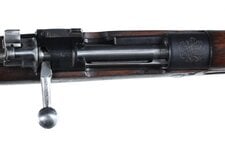 494_3.thumb.jpg.0c1f6bb36cbf368f32ad00c274112987.jpg48 KB · Views: 57
494_3.thumb.jpg.0c1f6bb36cbf368f32ad00c274112987.jpg48 KB · Views: 57 -
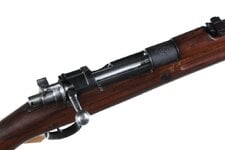 494_2.thumb.jpg.227fed1dde68668ea29da2b973c48483.jpg45.2 KB · Views: 53
494_2.thumb.jpg.227fed1dde68668ea29da2b973c48483.jpg45.2 KB · Views: 53 -
 494_1.thumb.jpg.ad71cb1ee2d125686ff43afa2a5e4ebb.jpg15 KB · Views: 52
494_1.thumb.jpg.ad71cb1ee2d125686ff43afa2a5e4ebb.jpg15 KB · Views: 52 -
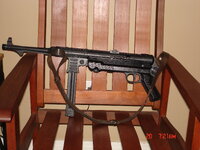 rifles 001.JPG556.9 KB · Views: 54
rifles 001.JPG556.9 KB · Views: 54 -
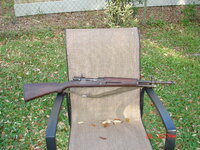 rifles 004.JPG1.2 MB · Views: 53
rifles 004.JPG1.2 MB · Views: 53 -
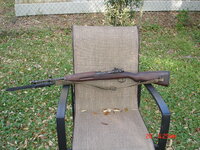 rifles 001.JPG1.2 MB · Views: 54
rifles 001.JPG1.2 MB · Views: 54 -
 494_5.thumb.jpg.53301a59d9b6d99107c06662bdb154ba.jpg14.9 KB · Views: 59
494_5.thumb.jpg.53301a59d9b6d99107c06662bdb154ba.jpg14.9 KB · Views: 59
I have a nice 7x57 deer carbine that was a Brazilian VZ24 bought by anti-government rebels but intercepted by the said government and used by the police for decades. The barrel was a sewer, and the stock was worse, but the action was in excellent condition. So I put a 19" barrel on it, had it parkerized, iron sights put on and a Boyd's stock that I have put several coats of tung oil on. It's the finest Mauser action I've ever handled. I expect you'll love yours.
Users who are viewing this thread
Total: 1 (members: 0, guests: 1)
Similar threads
- Replies
- 7
- Views
- 446

